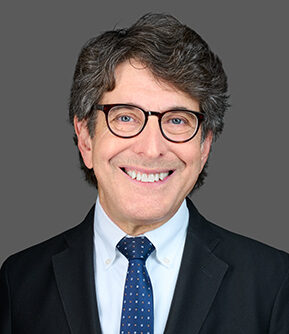How Does the Third Circuit Analyze Hospital Mergers?
On April 5, Hackensack Meridian Health System (“Hackensack”), New Jersey’s largest health system, and Englewood Healthcare Foundation (“Englewood”), a local hospital system in Bergen County, New Jersey notified the Federal Trade Commission (“FTC”) that they were calling off their proposed merger. The decision to abandon the merger followed the Third Circuit Court of Appeals (the “Court”) affirming a District Court decision to grant a preliminary injunction sought by the FTC to stop the hospitals from merging pending the outcome of an administrative adjudication.
The Court concluded that the merger would likely be anticompetitive in the relevant market. The Court’s 36-page opinion lays out in some detail how the FTC and courts such as the Third Circuit currently analyze proposed hospital mergers and provides a guide for health systems considering federal antitrust issues when planning such mergers.
The FTC opposed the merger and filed an administrative complaint alleging it would violate Section 7 of the Clayton Act because it was likely to substantially lessen competition in the relevant product and geographic market.
1) Product and Geographic Markets
The parties agreed that the relevant product market was the cluster of inpatient general acute care services offered and sold to commercial insurers. The parties vigorously disagreed as to the geographic market.
As to the applicable geographic market, the Court agreed with the FTC that the relevant geographic market should be defined by all hospitals used by commercially insured patients who reside in Bergen County, New Jersey, i.e., any hospital that serves a resident of Bergen County even if that hospital is not in Bergen County. Importantly, this market was chosen based on the testimony of the FTC’s expert that: Englewood and HUMC are in Bergen County; the majority of Bergen County residents receive care in Bergen County; and Bergen County is an economically significant area for insurers.
The Court then employed what is referred to as the “hypothetical monopolist test”:
- A geographic market is properly defined if a hypothetical monopolist could impose a small but significant non-transitory increase in price (“SSNIP”), typically about five percent, in the proposed market. If, however, in the case of a hospital merger, commercial insurers would respond to a SSNIP by purchasing the general acute care services from outside the proposed market, thereby making the SSNIP unprofitable, the proposed market definition is too narrow.
- The Court verified the market based principally on the testimony of the FTC’s expert and on the testimony of insurers, applying a “willingness to pay” standard.
- The Court rejected that the Hospitals’ assertion that there needed to be a showing of price discrimination, i.e., that customers in the geographic market could be charged higher prices for inpatient general acute care services than patients outside the market.
The Court then concluded that the merger would result in a highly concentrated market with the hospitals having market power — an indicator of anticompetitive effect.
- The Court looked to the Herfindahl-Hirschman Index (“HHI”) as a tool for measuring pre- and post-merger market concentration. A merger’s HHI is calculated by summing the squares of the market shares of each market participant.
- A post-merger market with an HHI below 1,500 is considered unconcentrated; a market between 1,500 and 2,500 is considered moderately concentrated; and a market with an HHI above 2,500 is considered highly concentrated.
- In addition to the post-merger HHI number, courts consider the increase in the HHI resulting from the merger. A merger that increases the HHI by more than 200 points and results in a highly concentrated market, is “presumed to be likely to enhance market power.”
- The FTC demonstrated that the post-merger HHI would be 2,835 — a number that crosses the highly concentrated market threshold. The merger would increase the HHI by 841 points — over four times the 200-point benchmark that creates a presumption of enhanced market power if the merger results in a highly concentrated market.
- The FTC also demonstrated that the Hospitals post-merger would command 47% of the market, with the next two closest competitors commanding only 21% and nine percent.
- The Court also considered significant information and materials produced by the Hospitals, their consultants, and commercial insurers, e.g., Englewood representatives speculating that Hackensack’s motivation for merging might stem from its competition with Englewood, Englewood’s president expressing concern about sharing information with Hackensack should the merger not go through, a consultant advising Englewood that accepting Hackensack’s offer would slow down competition between the hospitals, but accepting another North New Jersey health system’s offer would intensify competition.
2) Procompetitive Effects
While the Hospitals offered a number of procompetitive benefits that might result from the merger including upgrades and increased capacity, the expansion of complex tertiary and quaternary care, cost-savings resulting from service optimization between the Hospitals, and quality improvements at both Hospitals, the Court found that most of the Hospitals’ claimed benefits were either speculative or non-merger-specific and that the few procompetitive effects that the Hospitals did establish did not constitute significant economies that would ultimately benefit competition.
3) New Jersey Attorney General
The Court considered the New Jersey Attorney General’s and Department of Health’s reviews of the proposed transaction, each agency concluding that the merger would be in the public interest. However, the Court concluded that these assessments of the community’s interests along with the modest quality improvements and upgrades likely to occur because of this merger, were not significant enough to overcome the anticompetitive effects.


